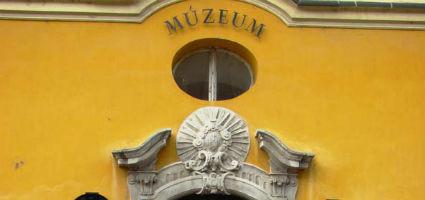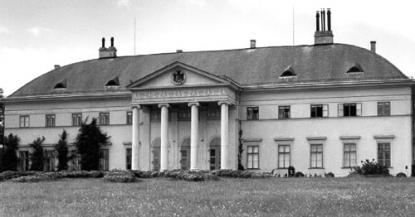2024. November 23. Saturday
King St. Stephen Museum - Székesfehérvár
 |
Address: 8000, Székesfehérvár Fő u. 6.
Phone number: (22) 315-583
E-mail: titkarsag@szikm.hu
Opening hours: 04.01-30.04., 01.10-22.12.: Tue-Fri 10-14, Sat-Sun 14-18
01.05-30.09.: Wed-Fri 10-16, Sat-Sun 12-18 24.05.2015.: 10-18 |
The exhibition has closed for visitors.
1970.01.01. - 2003.05.04.
Museum tickets, service costs:
|
Ticket for adults
|
700 HUF
|
/ capita
|
|
Group ticket for adults
(min. 10 people)
|
600 HUF
|
/ group
|
|
Ticket for students
|
350 HUF
|
/ capita
|
|
Group ticket for students
(min. 10 people)
|
250 HUF
|
/ group
|
|
Ticket for pensioners
|
350 HUF
|
/ capita
|
|
Group ticket for pensioners
(min. 10 people)
|
250 HUF
|
/ group
|
|
Ticket for families
(2 adults + 1 child)
|
1500 HUF
|
/ family
|
|
Group guide for adults
(max. 25 people)
|
6100 HUF
|
/ group
|
|
Group guide for adults
(from over 26 people)
|
7200 HUF
|
/ group
|
|
Group guide for students
(max. 25 people)
|
2800 HUF
|
/ group
|
|
Group guide for students
(from over 26 people)
|
3500 HUF
|
/ group
|
|
Group guide for pensioners
(max. 25 people)
|
2800 HUF
|
/ group
|
|
Group guide for pensioners
(from over 26 people)
|
3500 HUF
|
/ group
|
|
Group guide
(max. 25 people)
|
8300 HUF
|
/ group
|
|
Group guide
(from over 26 people)
|
9500 HUF
|
/ group
|
The palatine József found his family residence in Alcsút in the second half of the 19th century. In the last few days of WWII, the castle was burned out and completely destroyed afterwards.

After it was completely taken down, the debris was collected and a pile of it was formed behind the facade. Slowly nature took over the pile. In 1985, the restorer János Papp began a research work at the area. Through the years, he and his students worked with their whole heart to clean the porcelain, glass, crystal and metal pieces.
Several pictures were taken of the castle in the 19-20th centuries. These are kept in the Hungarian National Museum and the National Monument Protection Office. János Papp identified the pieces. Then they compared them to the photos of Frecskai Zoltán and Klösz György. Most of the furniture was also destroyed, only the mountings were preserved. Identifying these, the restorers slowly recovered the treasures of the palace. The National Széchenyi Library collected the material of the archives. We display these objects at our exhibition while we can read letters written by members of the Habsburg family.

After it was completely taken down, the debris was collected and a pile of it was formed behind the facade. Slowly nature took over the pile. In 1985, the restorer János Papp began a research work at the area. Through the years, he and his students worked with their whole heart to clean the porcelain, glass, crystal and metal pieces.
Several pictures were taken of the castle in the 19-20th centuries. These are kept in the Hungarian National Museum and the National Monument Protection Office. János Papp identified the pieces. Then they compared them to the photos of Frecskai Zoltán and Klösz György. Most of the furniture was also destroyed, only the mountings were preserved. Identifying these, the restorers slowly recovered the treasures of the palace. The National Széchenyi Library collected the material of the archives. We display these objects at our exhibition while we can read letters written by members of the Habsburg family.
